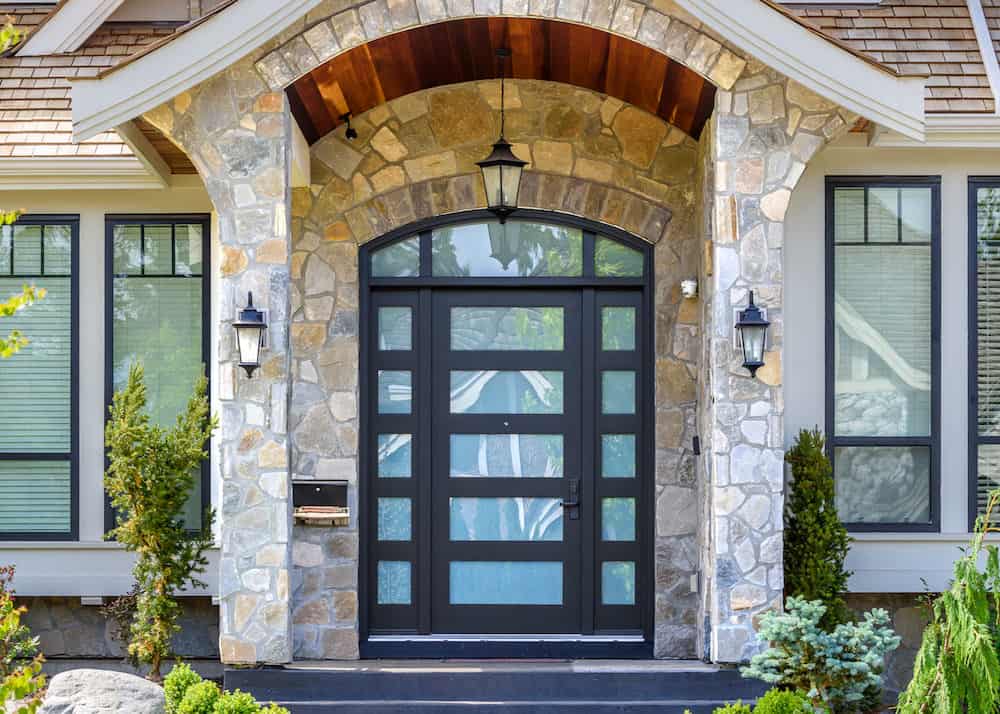The electric overhead garage door opener was invented in 1926 by C.G. Johnson [source: Wikipedia]. That’s fairly remarkable given automobiles hadn’t been around all that long by that point… or I should say hadn’t been mass produced all that long. The first mass-produced automobile was in 1901 by Ransom E. Olds (Oldsmobile). That’s only 25 years from the first mass-produced car to the first electric overhead garage door opener.
This brief article sets out two detailed diagrams illustrating the various parts of garage doors – one diagram for a tilt garage door and the other for a roll up garage door.
Anatomy of a Tilt-Garage Door

- Left Cable Drum: Keeps the garage door balanced and stable as it opens and closes.
- Reinforcing Angle: Supports the top section of a garage door.
- Spring Shaft: A solid steel handle of a tool that helps carry over the torsion springs’ lifting force to the cable drums and lifting cables.
- Torsion Spring: Elastic spring that exerts a torque or rotary force when twisted.
- Spring Pad: Pad located above the door and used to anchor the center bearing bracket.
- Stationary Cone: Connected into the end of a torsion spring.
- Operator Header Bracket: Distributes the load of the opener arm over a larger area.
- Angle Iron: The L-shaped steel that supports the rear of horizontal tracks from the ceiling.
- Right Cable Drum: Keeps the garage door balanced and stable as it opens and closes.
- Horizontal Track: The horizontal path that the carriage moves along in opening the garage door.
- Belt: Used in opening the garage door.
- Spring Support: Used as an automatic lock.
- Operator Support: Mounts the garage operator at a desired height.
- Operator: A device used for opening and closing garage doors.
- Control: Makes the garage operator accessible through a remote control.
- Sensor: Located on the sides of the garage door and about six inches from the ground and used as a safety measure especially when the garage door is closing.
- Top Section: Includes the top panel of the garage door.
- Intermediate Section: Includes the middle part of the garage door.
- Door Arm: Device that closes the door.
- Door Bracket: The hinge below the door arm.
- Bottom Section: Includes the low panel of the garage door.
- Right Jamb: The vertical framing on the right side of the door opening.
- Intermediate Hinge: Used to pivot sections as door opens.
- Release Rope: The rope attached to the door trolley and connected to the garage door opener carriage.
- Flag Bracket: Connected to the horizontal and vertical track.
- Vertical Track: The vertical path adjacent to the jamb.
- Magnetic Sensor: Located on the bottom sides of the garage door and used as a safety alarm.
- Light Switch: Device for turning on or off electric lights.
- Garage Door Switch: Triggers a garage door to open or close.
Anatomy of a Roll Up Garage Door

- Adjustable Intake Louver: A device that allows air intake and exhaust ventilation.
- Roll Up Door: Door that is rolled up to the ceiling for opening and and rolled down to the floor for closing.
- Aluminium Top Box: The top portion of the adjustable intake louver.
- Steel Support: Pulls the weight of the aluminium top box.
- Angle Iron: The L-shaped steel that supports the rear of horizontal tracks from the ceiling.
- Alternate Mounting Hole: Screw holes used for securing a fixture against a wall.
- Air Directional Vanes: Used for directing air flow.
- Aluminium Bottom Box: The bottom portion of the adjustable intake louver.
- Aluminum Slats: A rolling slat made of aluminium.
- End Slat: The bottom slat of the rolling door.
- Sectional Door: Type of garage door that opens vertically.
- Guide Rail: Guides the movement of the rolling door.
- Sectional Door Track: Has two vertical and two horizontal track pieces.
- Side Clip: Used to minimize friction at the working surface.
Related: 60 garage design ideas | Craftsman Garage Door Opener Problems (Solution)







